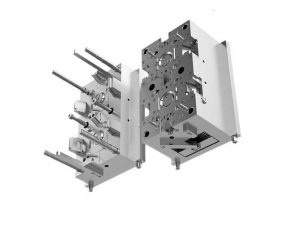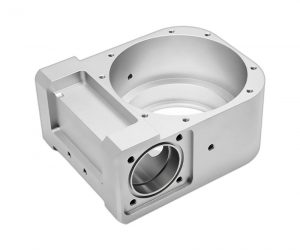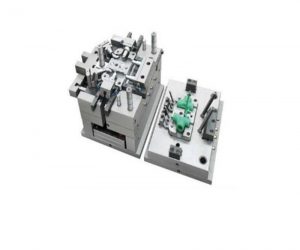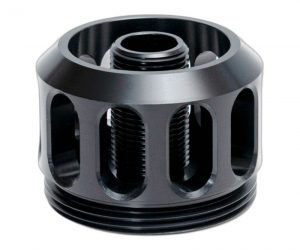1. Introduction
The importance of 3D printing shops in on - demand manufacturing design cannot be overstated. In an era where consumers and industries alike demand faster turnaround times, greater customization, and cost - effective solutions, 3D printing shops have stepped up to meet these challenges. They have enabled designers and engineers to bring their concepts to life with unprecedented speed, eliminating the need for complex and time - consuming traditional manufacturing processes such as molding, casting, and machining for initial prototypes.
For instance, in the consumer goods industry, a small startup might have an idea for a new, ergonomic kitchen utensil. Instead of spending months and a large amount of capital on creating molds for mass production, they can turn to a 3D printing shop. Here, they can have a functional prototype printed within days, allowing them to test the design, gather feedback, and make improvements before committing to large - scale manufacturing. This not only saves time but also reduces the financial risks associated with product development.
As Yigu Technology move further into the 21st century, the role of 3D printing shops in on - demand manufacturing design is only set to expand. With advancements in 3D printing technology, materials, and software, these shops are becoming more versatile and efficient. The following sections will explore in detail how 3D printing shops are shaping the future of on - demand manufacturing design, from the technologies they employ to the business models they adopt and the challenges they face along the way.
2. The Basics of 3D Printing Shops
2.1 What are 3D Printing Shops?
3D printing shops, also known as 3D printing service bureaus, are establishments that offer a wide range of 3D - related services. These services are designed to meet the diverse needs of customers, from individual hobbyists to large - scale industries.
The following Yigu Technology table summarizes the main services offered by 3D printing shops:
| Service Type | Description | Example Applications |
| Printing Services | Using various 3D printing technologies (FDM, SLA, SLS, etc.) to create physical objects from 3D models | Prototyping in product development, creating custom - made jewelry, manufacturing dental prosthetics |
| Equipment and Material Sales | Selling 3D printers (desktop and industrial) and a wide range of 3D printing materials | Home users setting up a personal 3D printing station, industries expanding their in - house 3D printing capabilities |
| Design and Consultation Services | Helping customers create 3D models and providing advice on 3D printing technology and material selection | Startups developing new products, individuals with a creative idea but no design skills |
2.2 The Working Process
The working process in a 3D printing shop is a well - defined sequence of steps that ensures the accurate and efficient production of 3D - printed objects.
Receiving the Design File:
The process begins when a customer submits a 3D model to the 3D printing shop. The most common file format for 3D models is STL (Stereolithography). Other formats like OBJ (Object File) and 3MF (3D Manufacturing Format) are also used. Once the file is received, the shop's staff will perform an initial check. They look for any errors in the model, such as non - manifold geometry (where surfaces do not meet in a proper way), holes in the model, or incorrect scaling. According to industry statistics, about 15 - 20% of the received 3D models require some form of repair or adjustment at this stage.
Slice Processing:
After the model is deemed suitable, it is sent through a slicing software. The slicing software divides the 3D model into a series of thin, horizontal layers. It also generates a G - code, which is a set of instructions that the 3D printer can understand. During this process, various parameters can be adjusted. For Yigu Technology example, the layer height can be set. A smaller layer height will result in a smoother surface finish but will increase the printing time. On average, a standard layer height for an FDM printer is around 0.2 mm, but it can be reduced to 0.1 mm or even less for high - quality prints. The infill density, which determines how much of the interior of the object is filled with material, can also be adjusted. A higher infill density will make the object stronger but will also use more material and increase the printing time. For a non - structural part, an infill density of 20 - 30% may be sufficient, while a load - bearing part may require an infill density of 50 - 100%.
Printing:
Once the slicing is complete, the G - code is sent to the 3D printer. The printer then starts the actual printing process. In an FDM printer, the extruder heats up the filament to its melting point and extrudes it through a nozzle. The nozzle moves in the X, Y, and Z directions according to the G - code instructions, depositing the melted filament layer by layer. In an SLA printer, the laser traces the cross - section of each layer on the liquid resin, curing it and bonding it to the previous layer. The printing time can vary greatly depending on the size and complexity of the object, the 3D printing technology used, and the chosen printing parameters. A small, simple object printed with an FDM printer may take only a few hours, while a large, complex industrial part printed with an SLS printer could take days.
Post - Processing:
After the printing is finished, the printed object usually requires post - processing. This step is crucial for improving the quality and functionality of the final product. For FDM - printed objects, post - processing may involve removing any support structures that were added during the slicing process to support overhanging parts. These support structures can be removed by hand, using tools like pliers and cutters, or in some cases, by dissolving them in a chemical bath if a soluble support material was used. The object may then be sanded to smooth the surface, removing any rough edges or layer lines. For SLA - printed objects, post - processing often includes cleaning the object in a solvent to remove any uncured resin. The object may also be post - cured under ultraviolet light to increase its strength and hardness.
3. The Rise of On - Demand Manufacturing
3.1 The Concept of On - Demand Manufacturing
On - demand manufacturing, also known as “build - to - order” or “pull - based” manufacturing, represents a fundamental shift in the traditional manufacturing paradigm. In contrast to the traditional “push - based” or “make - to - stock” approach, where products are mass - produced and stored in warehouses in anticipation of future demand, on - demand manufacturing operates on a simple yet revolutionary principle: products are manufactured only when there is a confirmed order from a customer.
This concept is made possible by advancements in digital technology, which enable seamless communication between customers, designers, and manufacturers. For Yigu Technology example, a customer can submit a design for a custom - made product through an online platform. The design is then transmitted instantaneously to a 3D printing shop or a manufacturing facility equipped with the necessary digital manufacturing tools. These tools, such as 3D printers or computer - numerically - controlled (CNC) machines, can quickly translate the digital design into a physical product.
One of the key advantages of on - demand manufacturing is the significant reduction in inventory costs. By eliminating the need to store large quantities of finished goods, businesses can free up capital that would otherwise be tied up in inventory. This is especially beneficial for small and medium - sized enterprises (SMEs) that may have limited financial resources. Additionally, on - demand manufacturing reduces the risk of overproduction and the associated waste. In traditional manufacturing, if market demand is miscalculated, companies may be left with large inventories of unsold products, which can lead to significant losses.
Another advantage is the high level of customization it offers. In today's consumer - centric market, customers increasingly demand products that are tailored to their specific needs and preferences. On - demand manufacturing allows businesses to meet these demands by producing customized products without the high costs associated with traditional mass - production methods. For instance, a consumer may want a smartphone case with a unique design or a pair of running shoes with personalized cushioning. With on - demand manufacturing, these customizations can be easily incorporated into the production process.
4. How 3D Printing Shops are Transforming On - Demand Manufacturing Design
4.1 Design Freedom and Complex Geometries
One of the most significant ways 3D printing shops are revolutionizing on - demand manufacturing design is through the provision of unparalleled design freedom and the ability to create complex geometries. In traditional manufacturing methods, such as injection molding or machining, the production process is often restricted by the limitations of the tools and the manufacturing techniques. For example, creating an object with internal cavities, undercuts, or intricate lattice structures using traditional methods can be extremely challenging, if not impossible, without the use of complex and expensive multi - step processes.
4.2 Customization Capabilities
3D printing shops have emerged as powerhouses for customization in on - demand manufacturing design. In today's consumer - driven market, customers are no longer satisfied with mass - produced, one - size - fits - all products. They crave uniqueness, personalization, and products that are tailored to their specific needs. 3D printing technology, with its digital - to - physical manufacturing process, is perfectly suited to meet these demands.
4.3 Faster Prototyping
The process of prototyping is a crucial step in product development, as it allows designers and engineers to test and refine their ideas before moving on to full - scale production. 3D printing shops have significantly accelerated this process, providing a much faster alternative to traditional prototyping methods.
In traditional prototyping, creating a physical prototype often involves multiple steps and can be time - consuming. For Yigu Technology example, if a product designer wants to create a prototype of a new smartphone case, using traditional methods might involve creating a mold for injection molding. This process can take weeks, as it includes steps such as designing the mold, machining the mold from a block of metal, and then testing the mold to ensure it produces the desired results. Any changes to the design would require going back to the mold - making stage, which further delays the process.
In contrast, with 3D printing, the prototyping process is much more straightforward and rapid. Once the 3D model of the smartphone case is designed using CAD software, it can be sent directly to a 3D printing shop. The shop can then start printing the prototype immediately. Depending on the size and complexity of the case, it can be printed within a few hours to a day. This rapid turnaround time allows designers to quickly test different design concepts, make adjustments, and iterate on their designs. For instance, they can test different ergonomic shapes, material thicknesses, or even add new features like built - in kickstands or card holders. This iterative process is essential for ensuring that the final product meets the needs and expectations of the target market.
4.4 Cost - Efficiency in Small - Batch Production
When it comes to small - batch production, 3D printing shops offer a cost - effective alternative to traditional manufacturing methods. In traditional manufacturing, the high upfront costs associated with tooling, molds, and setup make small - batch production economically unfeasible in many cases.
For example, in injection molding, which is a common traditional manufacturing method for plastic products, creating a mold can cost anywhere from a few thousand to tens of thousands of dollars, depending on the complexity of the product. This cost is then amortized over the production volume. For small - batch production runs of, say, 100 - 1000 units, the per - unit cost of the product becomes very high because the mold cost is spread over a small number of units.
In contrast, 3D printing does not require the creation of expensive molds. Each part is printed directly from the digital model, and the cost is mainly determined by the amount of material used and the printing time. This makes 3D printing an attractive option for small - batch production. A 3D printing shop can produce a small batch of products without incurring the high upfront costs associated with traditional manufacturing. Additionally, 3D printing allows for on - demand production, which means that products can be printed as they are needed, reducing the need for large inventories. This further saves costs, as there is no need to store large quantities of finished products, which can tie up capital and incur storage costs.
5. Conclusion
Yigu Technology 3D printing shops are at the forefront of a manufacturing revolution, reshaping the landscape of on - demand manufacturing design in profound ways. Through their unique capabilities, they have opened up new possibilities for designers, engineers, and businesses across a wide range of industries.
The design freedom and ability to create complex geometries offered by 3D printing shops have enabled the development of products that were previously unfeasible. From aerospace components with intricate internal cooling channels to automotive parts with optimized lattice structures, these complex designs are not only improving product performance but also driving innovation in materials science and engineering.
Customization has become a key differentiator in the market, and 3D printing shops are leading the charge. Whether it's personalized jewelry, custom - made prosthetics, or tailored consumer products, they are meeting the growing demand for unique and individualized items. This has not only enhanced customer satisfaction but has also created new business opportunities for small and medium - sized enterprises that can now offer customized products without the high costs associated with traditional manufacturing methods.
The significant reduction in prototyping time has accelerated the product development cycle. Companies can now quickly test and iterate on their designs, getting products to market faster and with greater confidence. This has also led to cost savings, as fewer resources are wasted on prototyping and re - engineering.
In small - batch production, 3D printing shops offer a cost - effective alternative. By eliminating the need for expensive molds and tooling, they have made it possible for businesses to produce small quantities of specialized or customized products without incurring exorbitant costs. This has been a game - changer for startups and small - to - medium - sized enterprises, allowing them to compete in the market with innovative products.
FAQ
Q1: What are the most common 3D printing technologies used in 3D printing shops?
A1: The most common 3D printing technologies used in 3D printing shops are Fused Deposition Modeling (FDM), Stereolithography (SLA), and Selective Laser Sintering (SLS). FDM is popular for general - purpose applications and creating prototypes due to its relatively low cost and versatility. SLA is known for its high - detail capabilities, making it suitable for jewelry and dental applications. SLS is often used for producing functional parts and prototypes in engineering and automotive industries, as it can work with powdered materials to create objects with good mechanical properties.
Q2: How can I ensure the quality of 3D - printed products from a 3D printing shop?
A2: To ensure the quality of 3D - printed products, first, provide a high - quality 3D model without errors such as non - manifold geometry or incorrect scaling. Check the 3D printing shop's reputation and customer reviews. Discuss with the shop about the appropriate 3D printing technology and materials for your project based on your requirements. Also, inquire about their post - processing services, as proper post - processing, like removing support structures, sanding, and curing (for SLA prints), can significantly improve the quality of the final product.
Q3: What are the typical costs associated with using a 3D printing shop?
A3: Costs in a 3D printing shop depend on several factors. For printing services, the cost is mainly determined by the amount of material used, the complexity of the design, and the printing time. Larger and more complex objects will generally cost more. If you require design services, there will be an additional charge based on the complexity of the design work. When it comes to equipment and material sales, the cost of 3D printers can range from a few hundred dollars for desktop models to tens of thousands of dollars for industrial - grade printers. The cost of 3D printing materials also varies widely, with common materials like PLA for FDM printers being relatively inexpensive, while more specialized materials, such as high - temperature resins or metal powders for SLS printers, can be quite costly.





